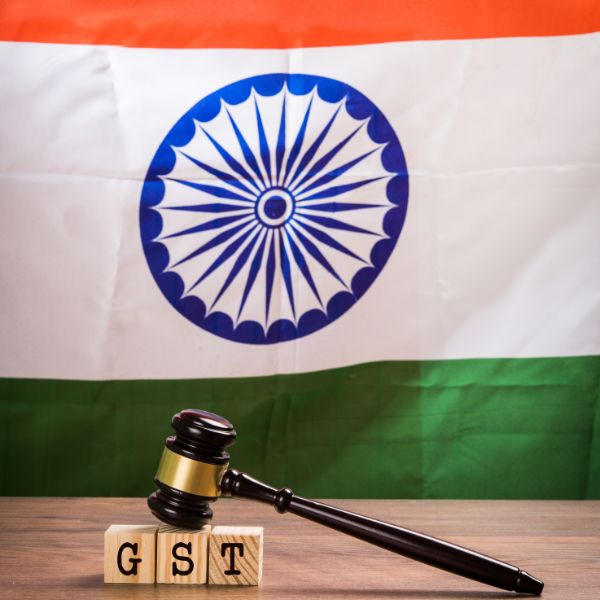
What Is GST?
The Goods and Services Tax (GST) is an indirect tax system that has been established in a lot of nations to simplify and streamline taxation. It is a tax on the supply of goods and services based on consumption that is imposed at each level of production and distribution. GST intends to end the cascading impact of taxes by replacing many taxes, including service tax and sales tax. Businesses are required by the GST to charge and collect tax from their clients and to claim input tax credits for taxes paid on purchases. Through the creation of a single and harmonised tax structure, this aids in the prevention of double taxation and encourages transparency and efficiency in the tax system.
The Journey of GST in India
- Constitutional amendment: The Constitution Amendment Act, which established the regulatory framework for the introduction of GST, was approved in 2016. With the help of this change, the federal and state governments may now jointly tax and manage the GST.
- Creation of the GST Council: To make decisions on GST-related issues, the GST Council was established, consisting of representatives from the federal and state governments. It was essential in developing the GST regulations, tax brackets, and administrative processes.
- The State Goods and Services Tax (SGST) Act and the Central Goods and Services Tax (CGST) Act were passed by the federal and state governments, respectively, through the legislative process. In order to regulate interstate transactions, the Integrated Goods and Services Tax (IGST) Act was also passed.
- The Goods and Services Tax Network (GSTN), a nonprofit organisation, was established to provide and maintain the IT infrastructure necessary for the GST implementation. The main hub for GST registration, return filing, and compliance processes became the GSTN portal.
- Transition and Migration: To inform companies about the new tax structure, the government organised intensive outreach initiatives and training sessions. The GST system has to be implemented, including provisions for transition credits and steps for a seamless transition.
- GST Implementation: On July 1, 2017, India's GST was formally implemented, replacing a number of indirect taxes. It signalled the start of a uniform tax system that intended to end the cascading effect, encourage ease of doing business, and establish a single market throughout the nation.
- GST in India has undergone several adjustments and reforms since it was put into place. To guarantee the efficient operation of the tax system, the GST Council has been actively involved in evaluating tax rates, adopting new regulations, and resolving industry complaints.


Objectives Of GST
- Harmonisation and Simplification: One of the main goals of GST is to harmonise and simplify the convoluted indirect tax structure by replacing many levies with a single, all-encompassing tax. It tries to unify tax laws, practises, and rates among many states or areas of a country in order to form a single tax system.
- Elimination of the Cascading Effect: The GST aims to end the tax cascading effect, commonly referred to as the tax on tax. It guarantees that tax is only imposed on the value added at each level by allowing firms to claim input tax credit on the tax paid at previous stages of the supply chain. This encourages effectiveness and lessens the tax burden on companies.
- Increasing the Tax Base: The GST seeks to increase the tax base by encouraging more companies to participate in the legal economy. GST encourages firms to register by putting in place a strong registration and compliance system, which increases tax compliance and increases government income.
- Increasing Ease of Doing Business: By offering a standard online platform for registration, return filing, and tax payment, GST streamlines compliance processes. By substituting a single GST return for several tax files, it lessens the compliance burden on businesses. This encourages corporate simplicity and lessens administrative complexity.
- Promoting a Common Market: By lowering restrictions on interstate trade and business, the GST makes it easier to establish a common national or regional market. The GST encourages smooth flow of goods and services across state boundaries, fostering economic integration and efficiency. It does this by abolishing the entrance tax and other state-specific fees.
- Reducing Tax Evasion and the Black Economy: By fostering accountability and transparency, GST intends to reduce tax evasion and the emergence of a black economy. Tax leakages are decreased and the efficiency of tax administration is increased thanks to the online reporting and real-time tracking of transactions under GST.
- Increasing Economic Growth: By simplifying the tax code, lowering company compliance expenses, and fostering a welcoming environment for investments, the introduction of GST is anticipated to increase economic growth. By establishing a stable and predictable tax structure, it encourages commerce, investment, and entrepreneurship.
Advantages Of GST
- GST replaces several indirect taxes with a single, all-inclusive tax, simplifying the tax structure. This streamlines the tax system, making it simpler for firms to comprehend and abide with tax regulations. Dealing with several tax authorities and tax rates is made simpler by this.
- Elimination of the Cascading Effect: Under the GST, companies may claim an input tax credit for taxes paid earlier in the supply chain. By doing this, the tax cascade, often referred to as tax on tax, is eliminated. It makes sure that tax is only assessed on value added at each level, lowering the overall tax burden on businesses and increasing the affordability of goods and services for consumers.
- Wider Tax Base: By bringing more companies into the formal sector, the GST aids in broadening the tax base. GST promotes business registration by providing a strong structure for registration and compliance, which increases tax compliance. This increases the tax base and boosts the government's ability to collect more money through taxes.
- Ease of Doing Business: By offering a unified online platform for registration, return filing, and tax payment, GST streamlines compliance operations. It lessens the cost of compliance for businesses by substituting one GST return for several tax filings. This encourages company convenience, improves effectiveness, and reduces the time and expense needed to comply with tax laws.
- Economic Growth Booster: By simplifying the tax code, the GST is predicted to increase economic growth. By lowering barriers to interstate trade and business, it fosters a shared market. This promotes corporate expansion across states and regions, increasing investment, generating more jobs, and fostering economic integration.
- Reduction in Tax Evasion: The GST encourages accountability and transparency through online reporting and real-time transaction tracking. This aids in reducing tax evasion and the development of a shadow economy. GST promotes the efficiency of tax administration and boosts overall tax collections by assuring higher compliance and minimising tax leakages.
- Consumer benefit: GST attempts to reduce overall taxation on products and services, making them more cheap for consumers. By getting rid of hidden taxes and lowering costs on products and services, it increases consumer welfare and buying power.


What are the components of GST?
- Government Registration Authorities: The government registration authority or agency responsible for company registrations is often a valuable source of information and support. They typically provide official guidance, documentation, and resources on their website, including registration forms, requirements, and FAQs. You may also be able to reach out to their customer service or support teams for assistance.
- Business Registration Portals: Many jurisdictions offer online portals or platforms specifically designed for company registrations. These portals often provide step-by-step guidance, online forms, and resources to help you navigate the registration process smoothly. They may also have dedicated support channels, such as live chat or helplines, where you can seek assistance.
- Professional Service Providers: If you prefer professional assistance, you can engage the services of lawyers, accountants, or company formation agents who specialize in company registrations. These professionals have expertise in the registration process and can guide you through the required steps, assist with document preparation, and ensure compliance with legal requirements.
- Online Forums and Communities: Online forums and communities dedicated to business or entrepreneurship can be excellent sources of support and resources. Platforms like Reddit, Quora, or specialized business forums allow you to ask questions, seek advice, and learn from the experiences of others who have gone through the company registration process.
- Legal and Business Advisory Services: Legal and business advisory firms offer specialized support for company registrations. They can provide personalized guidance, review your documentation, and ensure compliance with relevant laws and regulations. These services may come at a cost, but they can offer valuable expertise and peace of mind.
- Local Chambers of Commerce or Trade Associations: Local chambers of commerce or industry-specific trade associations often provide resources and support to new businesses. They may offer guidance on company registration procedures, networking opportunities, and access to business development programs or mentorship.
- Online Guides and Publications: Numerous online guides, articles, and publications are available that explain the company registration process in detail. These resources provide step-by-step instructions, tips, and insights to help you understand the requirements and navigate the registration process effectively.
Tax Laws Before GST
Central Excise Duty: It was a tax levied by the central government on the manufacture of goods in India. Excise duty was applicable at the time of production or manufacture of goods and was levied at various rates depending on the classification of goods.
Service Tax: Service tax was a tax levied by the central government on specified services rendered by service providers. It was applicable to a wide range of services such as banking, insurance, consulting, transportation, and other professional services.
Value Added Tax (VAT): VAT was a tax levied by the state governments on the sale of goods within their respective jurisdictions. It was a multi-stage tax levied on the value addition at each stage of the supply chain. Different states had different VAT rates and rules.
Central Sales Tax (CST): CST was a tax levied by the central government on inter-state sale of goods. It was applicable when goods were sold from one state to another and was charged at a specific rate.
Entry Tax: Entry tax was a tax levied by some states on the entry of goods into their jurisdiction. It was imposed on the movement of goods from one state to another and varied from state to state.
Customs Duty: Customs duty was a tax levied on goods imported into a country. It was imposed by the central government and varied based on the nature of goods and their country of origin.
Various Local Taxes: In addition to the above taxes, there were several local taxes such as octroi, local body taxes, luxury taxes, and others levied by municipal corporations or local bodies on specific goods or services within their jurisdictions.
How Has GST Helped in Price Reduction?
- A cascading impact, often known as a tax on tax, resulted from the old tax system's several levies placed on products and services at various points throughout the supply chain. By enabling companies to claim input tax credits on past taxes paid, GST gets rid of this cascading impact. By ensuring that tax is only assessed on value added, firms may lower their overall tax burden. As a result, it is anticipated that prices for products and services would drop.
- Rationalisation of Tax Rates: By simplifying the tax structure, the GST has led to a rationalisation of tax rates. It has lessened the tax burden on businesses by replacing several indirect taxes with a single comprehensive tax. By minimising disproportionate tax loads on products and services, the rationalisation of tax rates aids in price reduction.
- Cost Savings in Logistics: By reducing obstacles to interstate trade and commerce, the GST has aided in the development of a single market. Due to the ability of enterprises to now work more effectively across state borders, logistical costs have decreased. Cost savings from the smooth flow of commodities without state-specific checkpoints and entry fees can be passed on to customers in the form of cheaper pricing.
- Efficiency and compliance have been improved thanks to GST, which has implemented a technology-driven, streamlined compliance system. It has reduced the cost of compliance for businesses by substituting a single GST return for several tax filings. Businesses may save money as a consequence of this improved efficiency and simplicity of compliance, which may be reflected in cheaper costs for customers.
- Elimination of Hidden Taxes: Prior to the implementation of the GST, there were a number of state-specific levies and hidden taxes, such the octroi, entrance tax, and others. Previously, these undetected levies increased the cost of products and services by being included in their pricing. Such undetected fees have been absorbed by the GST, resulting in lower prices for consumers.

What are the New Compliances Under GST?
Businesses must adhere to a number of new rules and processes under the Goods and Services Tax (GST). Among the essential GST compliances are:
- Registration: Companies must register under GST if their annual revenue reaches the threshold amount set by the tax authorities. On all invoices and returns, they must include their special Goods and Services Tax Identification Number (GSTIN).
- GST Returns: Depending on their annual revenue, businesses are required to file periodic GST returns. The GSTR-1 (outward supplies), GSTR-3B (summary return), and GSTR-9 (annual return) are the three most popular returns. The frequency of submitting returns may change depending on the business's turnover.
- Tax Payment: Companies must make the necessary GST payments on the supplies they receive or make. Based on the GST rates that are relevant to the delivered goods or services, the tax obligation is determined. The approved GST gateway must be used to make online tax payments.
- Input Tax Credit (ITC): Companies may claim an input tax credit for taxes paid on purchases and other costs associated with their commercial activity. Before claiming the input tax credit, they must keep accurate records, confirm that the supplier has submitted the necessary GST filings, and pay the applicable tax.
- E-way Bill: Businesses are required to create an electronic waybill (e-way bill) for the transportation of products that exceed certain criteria. Details about the consignment, supplier, receiver, and carrier are included in the e-way bill. The transfer of products between states and, in some circumstances, within states must comply with this requirement.
- Record-keeping: Companies must keep accurate books of accounts, invoices, and records of their commercial dealings. The GST regulations require that these documents be kept for the required amount of time.
- Tax Deduction at Source (TDS) and Tax Collection at Source (TCS): In accordance with the GST, some designated parties, such as governmental organisations and e-commerce operators, are obligated to deduct or collect tax at source on specific types of transactions. They must abide with the TDS and TCS regulations, which include submitting returns and paying taxes to the government.
- Audit and Assessment: Organisations that reach specified sales limits must submit to a GST audit by a Chartered Accountant or Cost Accountant. The tax authorities may also do audits and assessments to see if firms are adhering to GST regulations.
- Compliance with Anti-Profiteering Provisions: Businesses must make sure that customers receive a benefit from lower taxes or input tax credits by lowering the cost of goods or services. To avoid fines or other repercussions, they must abide by the anti-profiteering rules.
FAQ:
GST has simplified the tax system, lowered the burden of compliance, and streamlined tax administration. It has facilitated a shared market, made conducting business easier, and helped to economic progress. The advantages include a decreased cascade impact, higher efficiency, and enhanced tax transparency.
For small enterprises, the composition scheme offers a simpler compliance solution. Businesses having a turnover less than a certain threshold can use the composition scheme to pay GST at a reduced rate without claiming input tax credit.
An e-way bill is a document required for the movement of goods above specified thresholds. It contains details of the consignment, supplier, recipient, and transporter. E-way bills are generated electronically and are mandatory for inter-state movement of goods.
Export of goods and services is treated as zero-rated supply under GST, meaning no GST is levied on exports. Imports, on the other hand, are treated as inter-state supplies and attract IGST, along with customs duties.
Businesses can claim an Input Tax Credit for GST paid on purchases or costs linked to their company activity. It aids in avoiding the tax cascade effect and minimises overall tax burden.
Businesses whose turnover exceeds the threshold limit specified by the tax authorities need to register for GST. However, certain categories of businesses are mandatorily required to register, irrespective of turnover.
GST rates are categorized into different slabs: 0%, 5%, 12%, 18%, and 28%. Some goods and services are exempted from GST or attract a nil rate. Certain goods and services may also attract a special rate or compensation cess.
There are three types of GST: Central Goods and Services Tax (CGST), State Goods and Services Tax (SGST), and Integrated Goods and Services Tax (IGST). CGST and SGST are applicable for intra-state supplies, while IGST is applicable for inter-state supplies.
The Goods and Services Tax (GST) is a destination-based tax system. It is imposed at every point along the supply chain, from the manufacturer to the customer. Input tax credit is provided for previously paid taxes, lowering the tax burden on the final consumer.
Goods and Services Tax, or GST, is an all-inclusive indirect tax imposed on the provision of goods and services. At the federal and state levels, it takes the place of several indirect taxes.
Documents Required for GST
- PAN Card
- Address Proof
- Identity Proof
- Bank Details
- Business Constitution
- Partnership Deed
- Incorporation Certificate
- Ownership Document
- Bank Statement
- Authorized Signatory



